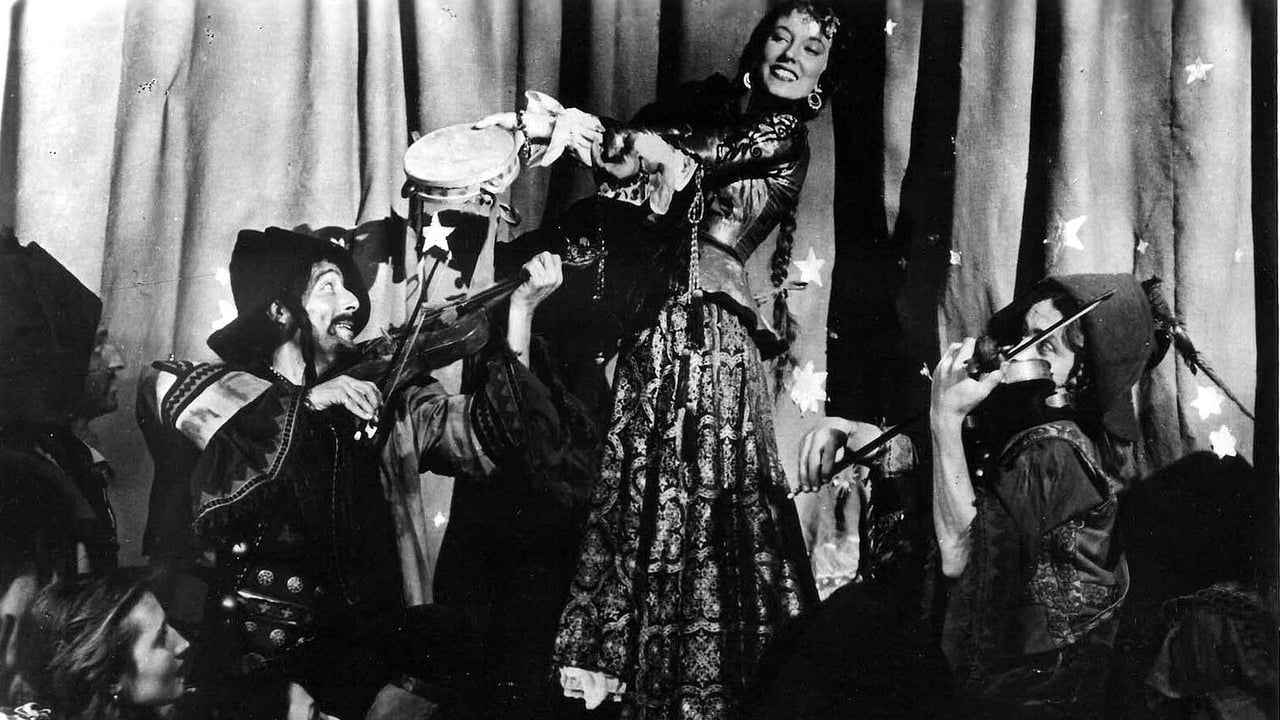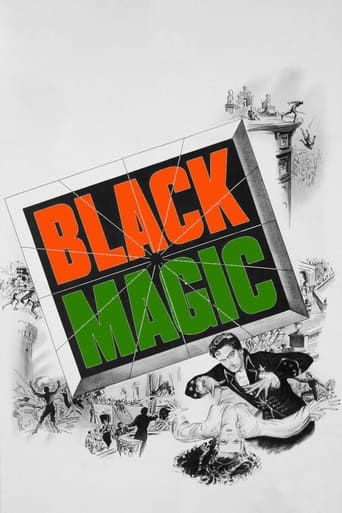

Years ago, I had significant training in hypnosis when I was in graduate school. One sad fact I learned is that despite films like "Black Magic" and "The Cabinet of Dr. Caligari", you cannot use hypnotic skills to turn people into slaves to do your evil bidding. I know...I know...a real shame isn't it? So, when I watch movies with plots like these, I just have to turn off my brain and enjoy them without thinking like a psychotherapist.When the film begins in the 18th century, some gypsies are unfairly accused of witchcraft and are executed at the orders of the Viscount de Montagne...and the couple's young son, Joseph Balsamo, is ordered blinded!! The boy is fortunately rescued...but not until after he witnesses his parents' execution. Not surprisingly, this embittered the boy and one day he would return for revenge...but how? One day, the famous hypnotist, Anton Mesmer, recognizes the young man's innate hypnotic skills and trains them. However, Balsamo isn't concerned with using the powers for good and soon disappears...out to make his fortune abusing his gifts. And, soon he's come to once again see the Viscount...and he hatches a plan to destroy him. However, after a while, revenge alone isn't what Balsamo wants...he wants power...and all of France!!The best thing about this film is Orson Welles' magnetic performance. The story is also quite good...and is well worth seeing.By the way, throughout the film folks use the word 'hypnosis'. This term was not coined until the 1820s and the film was set in the 1770s. Not a huge mistake...but it would have been referred to as either magnetism or mesmerism instead.
... View MoreWatching this very entertaining film for the first time today, I was curiously reminded of the screwball comedy "Start the Revolution Without Me" made twenty years later. I didn't even remember Welles participation in the film, which starred Gene Wilder and Donald Sutherland, but rather the Queen's annoyance toward her husband's obsession with clocks.I had always wondered why Welles appeared in this zany farce directed by Norman Lear and Bud Yorkin. Now I'm sure he had a hand in writing the script! The antics between Marie Antoinette and the King seem to be a continuation of ideas that began with "Black Magic".This fine Alexander Dumas classic utilizes the same plot device from "The Man in the Iron Mask". In that one Louis the XIV has a twin while Marie Antoinette has one in "Black Magic". Not only does this movie deserve a DVD release, but would be a great one to see in a theater as well.
... View MoreA curious, little-seen oddity based on an Alexander Dumas tale, it adapts the story of Cagliostro, played by Orson Welles, an 18th century magician and charlatan who has strange hypnotic powers and becomes involved in a plot to overthrow the French monarchy in order to revenge himself on the aristocrat who was responsible for the execution of his parents.In black and white, it makes use of dark scenes, shadows, close ups and other film noir techniques to accentuate the pseudo-magical qualities of Orson Welles' character. Akim Tamiroff as Welles' gypsy friend is rather good, but Nancy Guild in the dual role of Marie Antoinette and Lorenza, the woman who Cagliostro first rescues, then manipulates, is not outstanding. There is some sword-play and many elaborate costumes are on display in the court episodes, and the early scenes showing Cagliosto's gypsy boyhood when he falls foul of the aristocrat who hangs his father and mother and sentences the boy to be whipped and blinded are strong stuff for the time.The film seems to have been made in Rome for United Artists and although the plot is somewhat bizarre it is strangely watchable.
... View MoreI saw this movie as a boy and it lingers after nearly fifty years as a haunting memory. It may be what we now call noir, but the twinkle in Welles' eye also lingers, suggesting a gris texture. That twinkle is the same that Harry Lime (cine verde?) flashed to Holly Martin in the alley scene of The Third Man (which was also made in Europe in 1949).Cagliostro was a brilliant montebank, alchemist,poseur and rascal of the first order. Welles gave him credibility, perhaps recognizing a kindred spirit down the centuries. I still remember the dark, cobbled streets and slick rainy roof tops of eighteenth century European cities -- scenes also not unlike the ones in The Third Man. The ending, I remember, was also bitter sweet.I wish that those who produce lesser know classics for DVD restoration might see this "foreign" movie; it is obviously available somewhere since there have been other reviewers. If they chose it I could have my childhood Madeleine experience, and others would have another Welles film to compare with the finite now available.
... View More